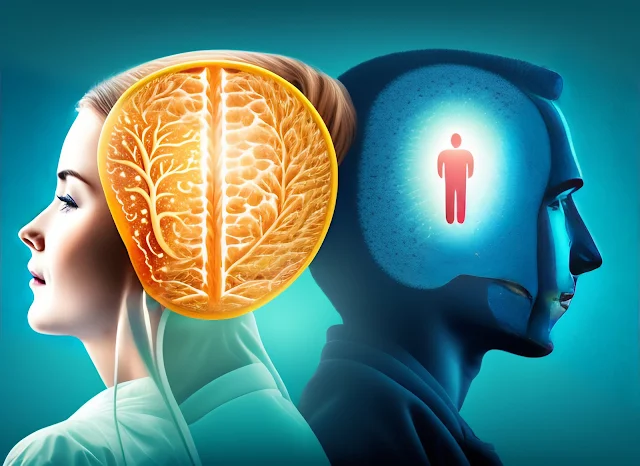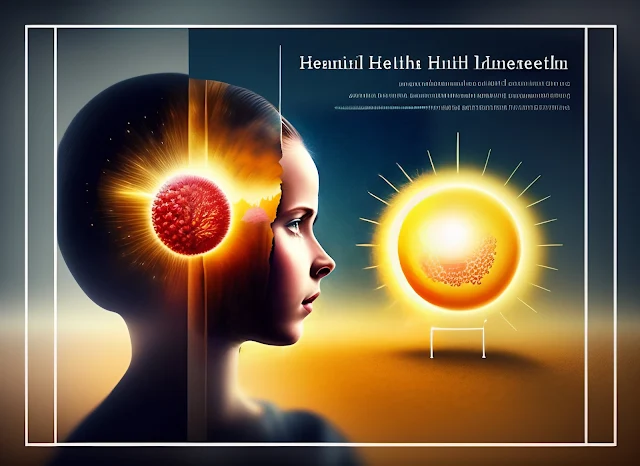Relaxation Techniques for Managing Stress: Mindfulness, Meditation, Yoga, Exercise, Self-Care, Coping Strategies, and Time Management
Introduction:
Stress is an inevitable part of life, and it affects everyone in different ways. Some people may experience stress due to work-related issues, while others may have stress related to personal relationships or health issues. Whatever the reason, stress can hurt our physical, emotional, and mental well-being. Fortunately, several relaxation techniques can help reduce stress and improve our overall quality of life. In this article, we will discuss some of the most effective relaxation techniques, including mindfulness, meditation, yoga, exercise, self-care, coping strategies, and time management.
Section 1: Mindfulness Techniques for Stress Reduction
Mindfulness is a practice that involves being fully present in the moment, without judgment or distraction. It is effective in reducing stress and improving overall well-being. Here are some mindfulness techniques that you can try:
- Raisin Exercise: In this exercise, you focus on a single raisin and observe it using all your senses. This exercise helps you to practice mindfulness and improves your ability to focus.
- Body Scan: This technique involves focusing your attention on different parts of your body, from your toes to your head. It helps you to become more aware of your body and its sensations.
- Mindful Seeing: In this exercise, you observe your surroundings without judgment, focusing on the colors, shapes, and textures of the objects around you. This helps to increase your awareness and appreciation of your environment.
- Mindfulness of Breath, Sounds, and Thoughts: This technique involves paying attention to your breath, the sounds around you, and your thoughts, without judgment. This helps you to become more aware of your thoughts and feelings and to develop a more positive outlook.
Section 2: Meditation Techniques for Stress Reduction
Meditation is another effective technique for reducing stress and improving overall well-being. It involves focusing your mind on a single point of reference, such as your breath or a mantra. Here are some meditation techniques that you can try:
- Loving-Kindness Meditation: This meditation involves focusing on sending positive energy and well-wishes to yourself and others. It helps to promote feelings of compassion and positivity.
- Body Scan Meditation: This meditation involves focusing on different parts of your body, from your toes to your head, and releasing any tension you may be holding in those areas.
- Breath Meditation: This meditation involves focusing on your breath and bringing your attention back to your breath whenever your mind starts to wander. It helps to improve focus and concentration.
- Walking Meditation: This meditation involves walking slowly and mindfully, focusing on each step and your surroundings. It helps to promote relaxation and reduce stress.
Section 3: Yoga Techniques for Stress Reduction
Yoga is a practice that combines physical postures, breathing exercises, and meditation to promote overall health and well-being. Here are some yoga techniques that you can try:
- Child’s Pose: This pose involves kneeling on the floor and stretching your arms forward, resting your head on the floor. It helps to release tension in your back and neck.
- Cat-Cow Pose: This pose involves moving your spine through a series of arches and rounds, which helps to release tension in your spine.
- Forward Fold: This pose involves standing with your feet hip-width apart and folding forward, touching your toes or the floor. It helps to release tension in your hamstrings and lower back.
- Warrior II Pose: This pose involves standing with your feet wide apart, with one foot pointing forward and the other pointing to the side. It helps to improve balance and focus.
Section 4: Exercise Techniques
Relaxation Techniques, Mindfulness, Meditation, Yoga, Exercise, Self-Care, Coping Strategies, Time Management
Are you feeling overwhelmed and stressed out? Do you struggle to find ways to manage your stress levels and achieve a state of relaxation? If so, you’re not alone. Stress is a natural part of life, but too much stress can lead to physical and mental health problems, such as anxiety, depression, and high blood pressure. In this article, we’ll explore various relaxation techniques that can help you manage stress, improve your mental and physical health, and achieve a sense of calm.
Relaxation Techniques
Relaxation techniques are a proven way to manage stress, reduce anxiety, and promote well-being. These techniques work by helping you focus your attention on your body, your breathing, or your thoughts, allowing you to let go of stress and tension.
- Breath Focus
Breath focus is a simple and powerful relaxation technique that involves taking long, slow, deep breaths while gently disengaging your mind from distracting thoughts and sensations. This technique is often referred to as abdominal or belly breathing, and it can help you feel calm and relaxed in just a few minutes. To practice breath focus, follow these steps:
- Find a quiet, comfortable place where you won’t be disturbed.
- Sit in a comfortable position with your feet flat on the floor and your hands in your lap.
- Take a deep breath through your nose, counting to four.
- Hold your breath for a count of seven.
- Slowly exhale through your mouth, counting to eight.
- Repeat this cycle for several minutes, focusing your attention on your breath.
- Progressive Muscle Relaxation
Progressive muscle relaxation is a technique that involves tensing and relaxing different muscle groups in your body. This technique can help you reduce muscle tension and achieve a sense of deep relaxation. To practice progressive muscle relaxation, follow these steps:
- Find a quiet, comfortable place where you won’t be disturbed.
- Sit or lie down in a comfortable position.
- Starting with your toes, tense the muscles in your feet and hold for a few seconds, then relax.
- Move on to your calf muscles, tensing and relaxing them in the same way.
- Continue moving up your body, tensing and relaxing each muscle group, including your thighs, buttocks, stomach, chest, back, shoulders, arms, and hands.
- When you reach your head and face, tense your muscles as much as possible, then relax.
- Take a few deep breaths and enjoy the feeling of deep relaxation.
- Visualization
Visualization is a relaxation technique that involves using your imagination to create a mental image of a place or situation that makes you feel calm and relaxed. Visualization can help you reduce stress and anxiety and achieve a sense of calm. To practice visualization, follow these steps:
- Find a quiet, comfortable place where you won’t be disturbed.
- Sit or lie down in a comfortable position.
- Close your eyes and take a few deep breaths.
- Imagine yourself in a peaceful and calming place, such as a beach, a mountain, or a forest.
- Use your senses to create a vivid mental image of this place, imagining the sights, sounds, smells, and sensations.
- Spend a few minutes in this peaceful and calming place, enjoying the feeling of deep relaxation.
- Mindfulness
Mindfulness is a relaxation technique that involves paying attention to the present moment without judgment. Mindfulness can help you reduce stress, anxiety, and depression and improve your overall well-being. To practice mindfulness, follow these steps:
- Find a quiet, comfortable place where you won’t be disturbed.
- Sit or lie down in a comfortable position.
- Focus your attention on your breath, noticing the sensation.
Yoga: A Holistic Practice for Body and Mind
Yoga is a holistic practice that combines physical postures, breathwork, and meditation to improve both physical and mental health. Practicing yoga has been shown to help reduce stress, anxiety, and depression while improving flexibility, strength, and balance.
Yoga postures, also known as asanas, help stretch and strengthen the body, which can alleviate physical tension and promote relaxation. Additionally, the breathing techniques used in yoga, such as deep diaphragmatic breathing, can help calm the mind and reduce feelings of stress and anxiety.
One study found that practicing yoga for just 20 minutes a day for eight weeks led to significant reductions in perceived stress and anxiety levels [4]. Other studies have found that practicing yoga can increase the production of GABA, a neurotransmitter that is associated with feelings of relaxation and reduced anxiety [5].
If you’re new to yoga, it’s best to start with a beginner’s class or video. Look for a gentle or restorative class that focuses on deep breathing and relaxation. You can also try yoga nidra, a form of guided meditation that is often practiced lying down and is designed to promote deep relaxation.
Exercise: Boosting Mood and Reducing Stress
Exercise is a powerful tool for reducing stress and boosting mood. When you exercise, your body releases endorphins, which are natural chemicals that help reduce pain and promote feelings of well-being. Exercise also reduces the levels of stress hormones in the body, such as cortisol and adrenaline, which can help you feel more relaxed and less anxious.
Aerobic exercises, such as running or cycling, are particularly effective at reducing stress and improving mood. One study found that participants who engaged in moderate-intensity aerobic exercise for 30 minutes a day, three times a week, had significantly lower levels of anxiety and depression than those who did not exercise [6].
Resistance training, such as weight lifting, can also help reduce stress and improve mood. In one study, participants who engaged in resistance training had significant reductions in anxiety and depression symptoms [7].
If you’re new to exercise, it’s best to start with a moderate-intensity activity, such as brisk walking or cycling. Gradually increase the intensity and duration of your workouts as you become more comfortable.
Self-Care: Taking Time for Yourself
Self-care is an essential component of stress management. It involves taking time for yourself to do things that you enjoy and that help you relax and recharge. Self-care can be as simple as taking a hot bath or reading a good book, or it can involve more structured activities, such as yoga or meditation.
The key to effective self-care is to find activities that work for you and to make them a regular part of your routine. It’s also important to be mindful of your own needs and to prioritize self-care in your daily life.
Here are some examples of self-care activities that you can try:
- Take a relaxing bath or shower
- Go for a walk in nature
- Read a book or listen to music
- Practice yoga or meditation
- Spend time with friends or family
- Get a massage or other spa treatment
- Journal or engage in other creative activities
The key is to find activities that help you feel relaxed and rejuvenated and to make them a regular part of your routine.
Coping Strategies: Managing Stressful Situations
In today’s fast-paced world, it’s easy to feel overwhelmed by the constant stream of responsibilities, deadlines, and obligations. It’s no surprise that many people struggle with stress and anxiety, which can have a significant impact on their mental and physical health. However, there are many coping strategies available that can help you manage stressful situations more effectively and improve your overall well-being.
One of the most effective coping strategies is relaxation techniques. By learning to relax your mind and body, you can reduce feelings of anger, frustration, and anxiety. According to the Mayo Clinic, relaxation techniques can help you boost your confidence to handle problems and cope with stress more effectively [1]. Some popular relaxation techniques include deep breathing, progressive muscle relaxation, and visualization.
Another strategy that has gained popularity in recent years is mindfulness. Mindfulness is the practice of being present in the moment, without judgment or distraction. By focusing your attention on the present moment, you can become more aware of your thoughts and feelings, and develop a greater sense of self-awareness. Positive Psychology reports that the practice of mindfulness has been shown to improve mental and physical health, reduce stress, and improve overall well-being [2]. Some examples of mindfulness exercises include the raisin exercise, body scan, mindful seeing, and mindfulness of the breath, sounds, and thoughts.
Mindfulness Meditation
Mindfulness meditation is a type of meditation that is often used to reduce stress and anxiety. It involves focusing your attention on the present moment and becoming aware of your thoughts and feelings. This type of meditation is effective in reducing symptoms of depression and anxiety [2]. Here are some tips for practicing mindfulness meditation:
- Find a quiet and comfortable place to sit.
- Close your eyes and focus your attention on your breath.
- When your mind begins to wander, gently bring your attention back to your breath.
- Try to practice for at least 10–15 minutes per day.
Yoga
Yoga is a physical practice that involves stretching, breathing, and relaxation. It is effective in reducing stress and anxiety and improving overall well-being [4]. Here are some tips for practicing yoga:
- Find a quiet and comfortable place to practice.
- Choose a sequence of poses that is appropriate for your skill level.
- Focus on your breath and move slowly and mindfully.
- Try to practice for at least 20–30 minutes per day.
Exercise
Exercise is a great way to reduce stress and improve your overall well-being. It releases endorphins, which are natural feel-good chemicals in the brain. Here are some tips for incorporating exercise into your self-care routine:
- Choose an activity that you enjoy, such as walking, swimming, or dancing.
- Aim for at least 30 minutes of moderate exercise per day.
- Try to find a workout buddy or join a class to stay motivated.
Coping Strategies
Coping strategies are techniques that you can use to manage stress and anxiety. They can be simple activities, such as taking a walk or listening to music, or more complex techniques, such as cognitive-behavioral therapy. Here are some tips for using coping strategies:
- Identify the sources of stress in your life and make a plan to manage them.
- Try different coping strategies and find the ones that work best for you.
- Use coping strategies regularly, even when you are not feeling stressed.
Time Management
Effective time management is an important part of self-care. It can help you to reduce stress, increase productivity, and achieve your goals. Here are some tips for improving your time management skills:
- Create a schedule and stick to it.
- Prioritize your tasks and focus on the most important ones first.
- Break larger tasks into smaller, more manageable ones.
- Take regular breaks to avoid burnout.
Conclusion
Relaxation techniques are an important part of self-care. They can help you to reduce stress, improve your overall well-being, and feel more confident in your ability to handle problems. By incorporating relaxation techniques, such as mindfulness meditation, yoga, exercise, coping strategies, and time management, into your daily routine, you can experience the benefits of relaxation and enjoy a more fulfilling life.
























